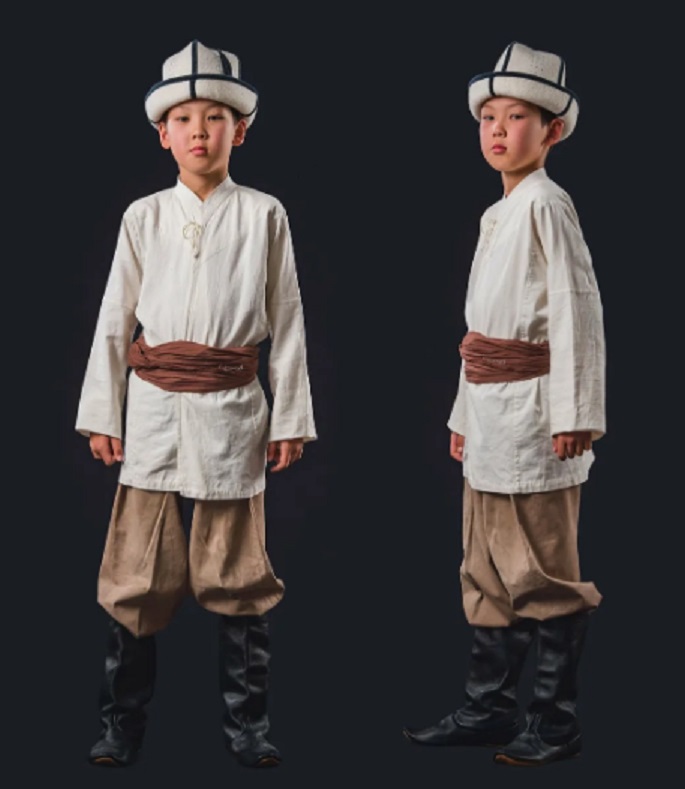
In the men's Kyrgyz costume, wearing a belt is considered mandatory. For the past hundred years, belts have been made using a kushak, a wide leather (or velvet) belt adorned with silver buckles and scarves. The most archaic type is considered to be the kushak (boto kur, bel kur) made from a strip of home-produced fabric 1.5 to 2 meters long and 30 to 35 cm wide. Older men wore a white kushak, middle-aged men wore a darker color, and young men wore red.
Boys began to wear the kushak at the same time as they put on the "jegde" shirt. The method of tying is the same everywhere: the fabric wraps around the waist two or three times, the ends are tied in front and hidden behind the belt. It was customary to tighten the kushak tightly. A loosely tied kushak would provoke hurtful mockery.
Over time, handwoven kushaks began to be replaced by factory-made fabric, as well as embroidered silk and cotton scarves measuring 70-80 cm by 70-80 cm. Southern Kyrgyz refer to waist scarves by different names: charchy (square), kyik (scraps of fabric), bel boo (belt), oromol, zholuk (scarf). The first four names are usually used in the western regions of the area, which is associated with the widespread use of these terms among Uzbeks and Tajiks. In the eastern regions and in the Alai Valley, "zholuk" is more commonly used, as is the case with northern Kyrgyz.
The method of tying a scarf is uniform throughout southern Kyrgyzstan and is undoubtedly borrowed from Uzbeks and Tajiks. It is worn over the shirt or robe. For this, the scarf is folded diagonally, slightly twisted, the embroidered corner is lowered over the lower back, and the ends are tied in front (or slightly to the right) with a double knot. Sometimes two or three scarves are tied at once. This is especially flaunted by the youth.
In the past, Kyrgyz wore a leather belt (byodeno kemer) adorned with silver decorative plates. It was worn only over outer clothing. Among southern Kyrgyz, such a belt was common in the 19th century, but it was primarily a feature of the clothing of wealthy, noble Kyrgyz. This is unanimously noted by our informants. Southern Kyrgyz also used velvet belts decorated with silver, which was typical for the clothing of wealthy Uzbeks as well. Literature indicates that Kyrgyz, along with Uzbek scarves, also used wide belts. S. M. Dudin also notes that Alai Kyrgyz wear a leather belt with massive buckles over the embroidered scarf. It seems that wearing a scarf among Kyrgyz became fashionable in the 1880s and became widespread in the early 20th century. Leather and velvet belts have now completely fallen out of use.
In the last century, among Kyrgyz, as well as many other peoples of Central Asia, as well as among Altaians and Mongols, there was a widespread ancient custom of wearing a set of a knife, razor, awl, and flint on the left side of the belt. All these items were attached to the belt with leather cases and straps. A leather wallet was also hung. The practice of carrying suspended items on the belt continues to this day among older Kyrgyz. Younger individuals sometimes attach only a knife to their belt.
Felt clothing of the Kyrgyz - kementai














































